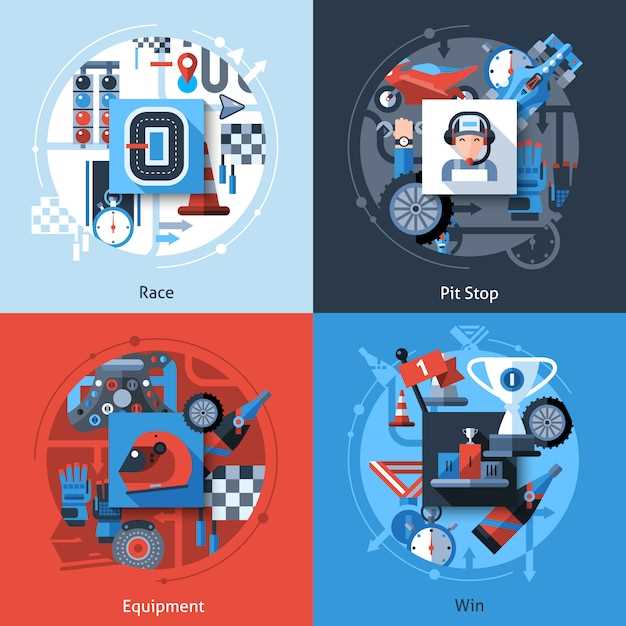
In the world of racing, the design of a car’s suspension plays a critical role in its overall performance. The complex interactions between the tires and the road surface are heavily influenced by the geometry of the suspension system. To achieve optimal handling and stability, a precise setup is essential, allowing drivers to navigate corners at high speeds while maintaining control over the vehicle’s dynamics.
Suspension geometry encompasses a variety of factors, including camber, caster, and toe angles, which collectively determine how the tires interact with the ground. Each of these parameters impacts grip, tire wear, and stability, making it imperative for race engineers to carefully analyze and adjust them based on the specific demands of the track and driving style. Understanding these elements is vital for anyone aiming to maximize their vehicle’s performance in competitive racing.
By delving into the intricacies of suspension systems, teams can fine-tune their setup to match the unique characteristics of a racing circuit. This understanding not only enhances the car’s ability to respond to driver inputs but also ensures that it can endure the physical stresses encountered during high-speed racing conditions. In this article, we will explore the essential components of suspension geometry and their implications for racing car performance.
Optimizing Camber Angles for Maximum Tire Grip

Camber angle is a crucial element in the suspension setup of racing cars, significantly impacting tire grip and overall performance. This angle refers to the tilt of the wheels relative to the vertical axis when viewed from the front of the vehicle. Adjusting camber can enhance tire contact with the road, allowing for better traction during acceleration, braking, and cornering.
In racing scenarios, optimal camber angles are often negative, meaning the top of the tire tilts inward towards the vehicle. This configuration maximizes the tire’s contact patch during cornering, as the lateral forces applied to the tires cause them to flex and deform. By adopting the right camber angle, teams can improve cornering speeds while minimizing tire wear and maximizing grip.
The ideal camber setting varies based on several factors, including track surface, weather conditions, and vehicle dynamics. For example, a smoother track may allow for a greater negative camber angle, while bumpy surfaces might require less tilt to maintain stability. It is essential to find a balance that provides consistent tire performance throughout the race.
Furthermore, different types of racing disciplines might demand distinct camber setups. For instance, endurance racing may prioritize long-term tire wear management over peak performance, leading to less aggressive camber adjustments. Conversely, sprint racing might benefit from maximum grip through more pronounced negative camber settings, especially during high-speed cornering.
To fine-tune camber angles effectively, data analysis plays a vital role. Teams utilize telemetry and tire temperature monitoring to assess optimal grip levels under various conditions. Continuous adjustments and real-time data interpretation allow for a dynamic suspension setup that adapts to track changes and driver feedback.
Ultimately, optimizing camber angles is essential for achieving maximum tire grip and enhancing overall vehicle performance. A well-configured suspension setup that considers camber, along with other parameters, can make the difference between victory and defeat on the racetrack.
Evaluating Weight Distribution in Suspension Setup

In the realm of racing, the distribution of weight across a car’s chassis plays a crucial role in determining its performance and handling characteristics. A well-designed suspension setup can significantly enhance a vehicle’s stability, traction, and overall speed by optimizing weight distribution. This evaluation involves understanding how weight affects various aspects of a car’s dynamics, especially during high-speed maneuvers.
When configuring the suspension, engineers must consider the center of gravity and its relationship to the vehicle’s weight distribution. An optimal balance between the front and rear axles is essential; too much weight at the front can lead to understeer, while a rear-heavy setup might cause oversteer. The ultimate goal is to achieve a near-perfect 50/50 weight distribution, allowing for even tire wear and improved cornering capabilities.
One effective method to evaluate weight distribution is through corner weighting, which involves measuring the weight on each tire when the car is in a static position. This data reveals how weight shifts during acceleration, braking, and cornering, providing insights into necessary adjustments in the suspension design. By fine-tuning components like springs, dampers, and anti-roll bars, engineers can manipulate how weight is transferred, thus enhancing grip and control.
Moreover, the positioning of components such as the engine, transmission, and even the fuel tank can impact weight distribution. For racing vehicles, where every fraction of a second counts, optimizing these placements is fundamental for achieving the desired balance and performance on the track.
In conclusion, evaluating weight distribution is a vital aspect of suspension setup in racing cars. A balanced weight distribution not only enhances handling and stability but also contributes to faster lap times and improved competitive performance. By carefully analyzing and adjusting the suspension design, teams can gain a strategic advantage on the circuit.
Adjusting Roll Centers to Enhance Cornering Performance
In racing car design, the suspension system plays a pivotal role in determining the vehicle’s handling characteristics. One critical aspect of suspension geometry is the position of roll centers, which significantly influences cornering performance. Adjusting roll centers allows engineers to optimize weight transfer during cornering, thus enhancing grip and stability.
The roll center is defined as the point around which the car rolls during a turn. A high roll center will result in a stiffer ride, leading to less body roll but potentially sacrificing tire contact with the road. Conversely, a low roll center might provide a softer ride, improving compliance but increasing body roll, which can lead to reduced performance. Striking the right balance is essential for achieving an ideal setup tailored to the specific racing conditions.
Adjustments to roll centers can be made through various methods, including altering the geometry of the suspension arms, adjusting ride height, or changing the mounting points of the dampers and springs. By positioning the roll center closer to the Center of Gravity (CG), engineers can reduce the lever arm effect, allowing for improved tire contact during lateral loads.
Additionally, understanding the lateral acceleration and the load transfer dynamics when modifying roll centers is crucial. A well-designed suspension that incorporates the correct roll center positioning can inspire driver confidence, enhance cornering speeds, and ultimately lead to better lap times. Fine-tuning these parameters not only speaks to the intricacies of racing car design but also highlights how adjustments can yield significant competitive advantages on the track.
Ultimately, moving the roll center alters the vehicle’s handling characteristics, enabling teams to tailor their setups according to track configurations and driver preferences. Fine-tuning suspension geometry, particularly with regard to roll centers, becomes an essential aspect of maximizing cornering performance in racing environments.



